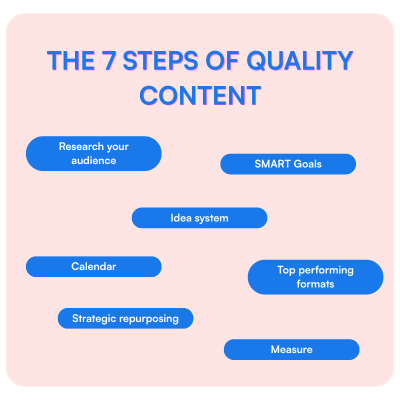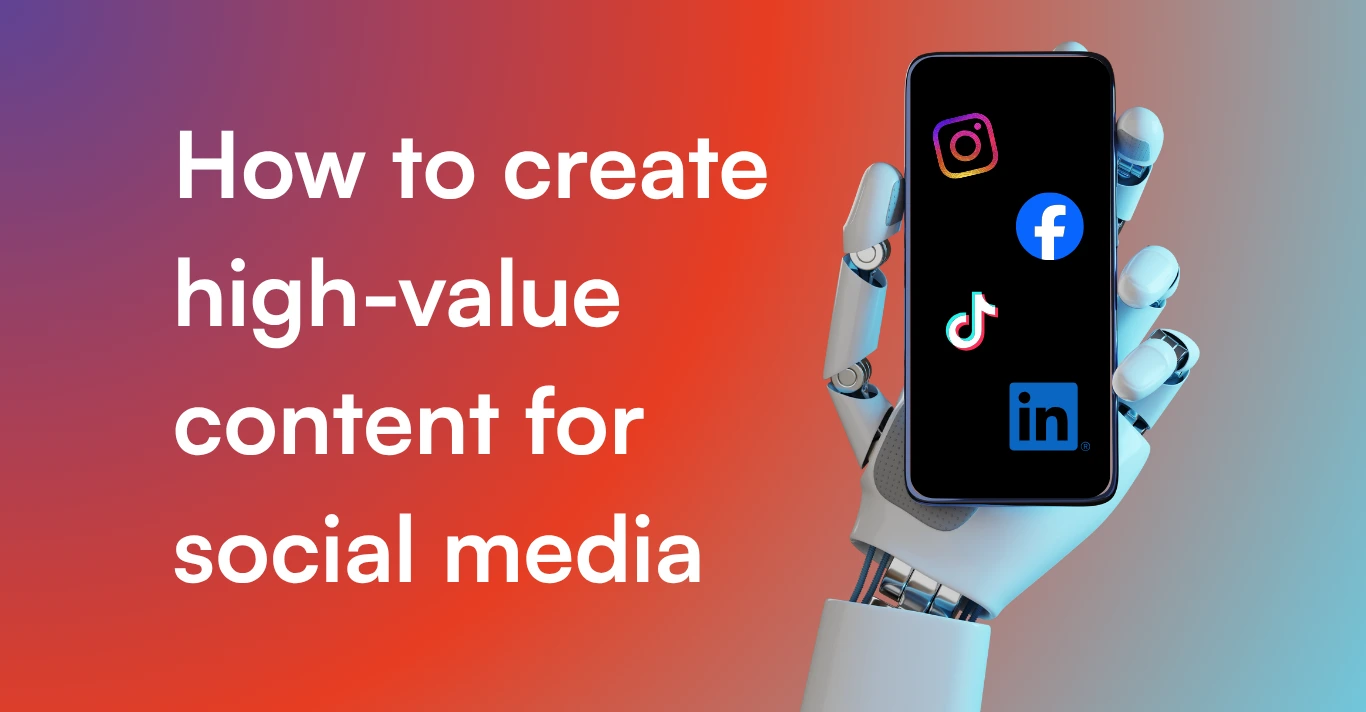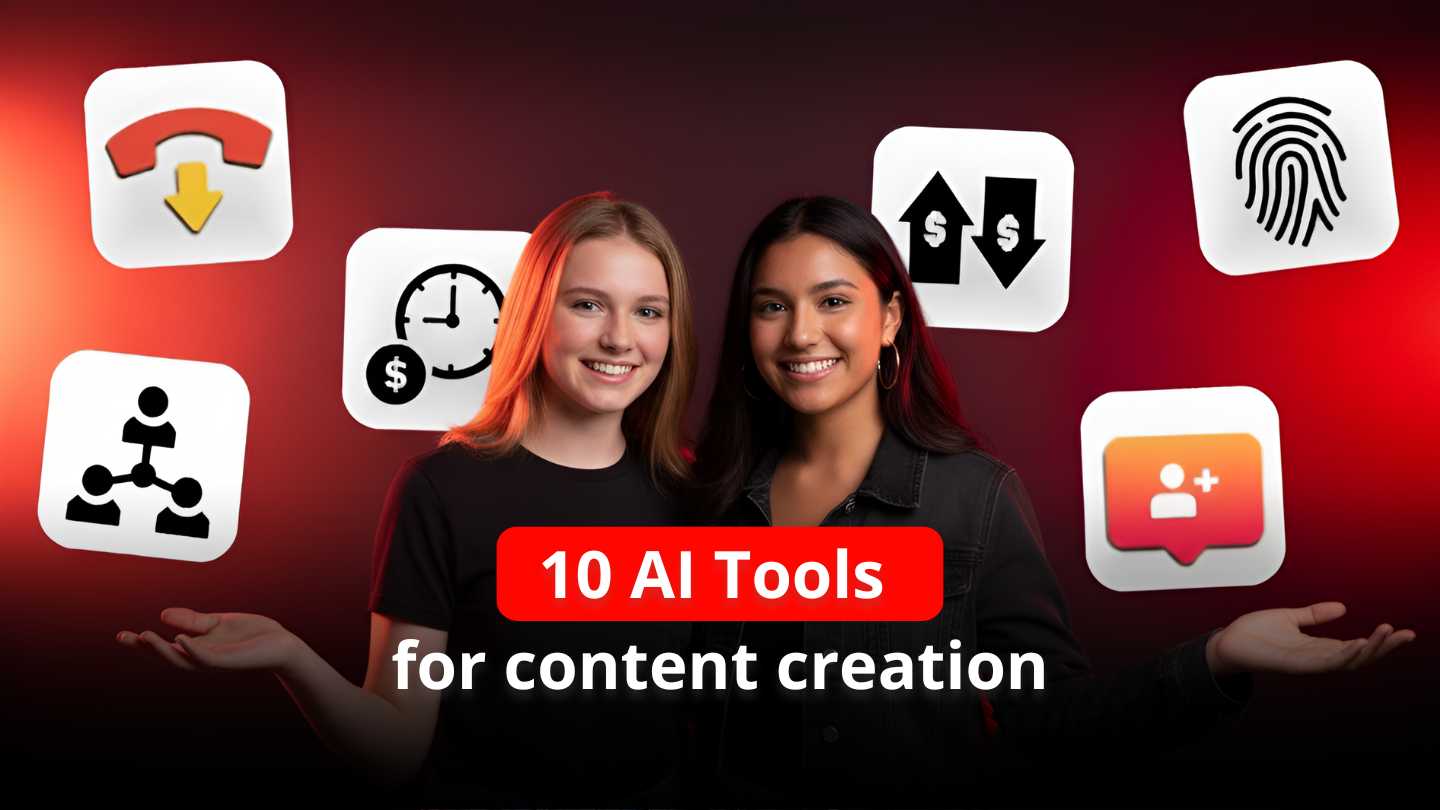Table of Contents
Creating high-value content is a system, not a stroke of luck: understand who you’re speaking to, set SMART goals, ideate systematically, produce with a consistent cadence, balance the four pillars, distribute effectively, and measure to improve. Apply the 7-step method and you’ll create content that connects, builds community, and drives the business forward.
What does “high-value content” mean (and why it drives sales and community)?
When we talk about “high-value content,” we mean posts that solve a concrete need for your audience: they inform, educate, entertain, or inspire in a genuinely useful way. That’s why they stop the scroll and generate saves, shares, and conversation.
Recent content-marketing literature links it to relevance, originality, usefulness, visual consistency, and engagement potential—plus clear alignment with your goals and target audience (it’s not posting for posting’s sake).
Why does it impact sales? Because sustained value builds trust and brand recall, increases engagement, and powers every stage of the funnel: awareness (reach), consideration (education), conversion (social proof and offer), and retention/loyalty (community and support).
Bottom line: “value” is the lever that turns attention into action.
The 4 pillars of delivering value: entertain, educate, inspire, and sell
- Entertain to earn attention and affinity (contextual memes, well-adapted trends).
- Educate to deepen understanding (tutorials, guides, case studies).
- Inspire to connect on values and vision (stories, behind-the-scenes).
- Sell to drive frictionless conversions (clear offers, product demos, social proof).
The power is in the mix—and the sequencing. Platforms like TikTok reward entertainment and dynamic formats; LinkedIn is better suited to education and inspiration; Instagram lets you balance all four via Reels, carousels, and Stories.
How to balance the mix by platform
- Instagram: Reels for discovery, educational carousels for consideration, Stories with stickers for interaction, and finish with clear CTAs (e.g., “book your spot”).
- TikTok: 1–2s hooks, quick cuts, large captions/subtitles, and prompts to comment/duet.
- LinkedIn: 8–12-line posts with an insight + example + takeaway; native Document/Carousel posts for tutorials.
To create quality content on LinkedIn, I recommend using Neotype’s LinkedIn post generator, an AI tool created to achieve conversions and engagement.

7 steps to create content that connects
1. Research your audience and set SMART goals
Define segments, pain points, and desires. Then set SMART goals: “increase IG save rate from 4% to 7% in 60 days” → this guides formats and messaging.
SMART:
- Specific
- Measurable
- Achievable
- Relevant
- Time-bound
This practice is backed by recent guides that recommend deep audience understanding and clear objectives as the foundation of strategy.
2. Idea system: social listening, questions, and trends
- Social listening: analyze comments and DMs; surface repeated questions.
- Source topics: run Story polls, question stickers, and Lives..
- Trends with purpose: not every trend helps; prioritize those you can tie back to your value proposition.
3. Top-performing formats on IG, TikTok, and LinkedIn
- Tutorials/guides (high educational value; work across platforms).
- UGC (user-generated content) for social proof and reach.
- Behind-the-scenes to humanize your brand.
- Trends and collabs with creators/influencers for reach spikes.
4. 30-day calendar and production workflow
- Instagram routine: 3 Reels/week (discovery), 2 carousels (education), 3–5 Stories/day (interaction), 1 Live/month (depth).
- TikTok: 4–6 videos/week (fast cadence + themed series).
- LinkedIn: 3 posts/week (insights + case examples) and 1 document/carousel per week.
- Basic workflow: brief → script → shoot/design → edit → QA → schedule → community management → reporting.
5. Strategic repurposing (1 idea → 5 assets)
Example: from one long guide → a carousel (steps), a Reel (30–45s recap), a Story (question/quiz), a LinkedIn post (insight + example), and a newsletter (case + template). This lowers cost per idea and increases touchpoints.
6. Publishing, distribution, and reach boosting
- Roll out in waves (day 0 organic; day 2 re-share in Stories; day 4 remix/duet on TikTok).
- Add paid to your top performers, targeting warm audiences (video viewers, website visitors).
- Use CTAs for micro-conversions: save, share, comment (not always a direct sale).
7. Measurement and iteration: the KPIs that matter
Prioritize perceived-value signals: saves, shares, video retention, replies to stickers/questions, down-funnel clicks, qualified leads. Build a KPI dashboard per objective and review weekly/monthly. Continuous measurement and optimization are core in current guides (KPIs, monitoring, and platform-by-platform tuning).
Deepen: 8 ads copywriting tips
12 examples of high-value content by objective
Awareness
1) “Myth vs. reality” Reel (polarizing hook).
2) TikTok: “3 mistakes in X that cost you money.”
3) Contextual meme with an industry insight.
Consideration
4) Step-by-step carousel with a downloadable checklist.
5) Practical case study (before/after) on LinkedIn.
6) 60-second mini-tutorial (screen recording).
Conversion
7) UGC video testimonial + benefit overlays.
8) Comparative demo “A vs. B” with a free-trial CTA.
9) Live Q&A addressing objections.
Retention/Loyalty
10) “Best of the month” newsletter + roundup.
11) Behind-the-scenes on process/values.
12) Community challenges with a branded hashtag.
Common mistakes when “creating value” (and how to avoid them)
- Talking about yourself before the user. Fix: every piece must answer, “What does the audience gain today?”
- Confusing reach with value. Likes ≠ usefulness; track saves and watch time.
- Not adapting the format to each platform. A long-form article won’t hit the same on IG; break it up and serialize.
- Not measuring or iterating. Without KPIs and regular reviews, there’s no improvement.
Quick templates: hooks, copy, and CTAs that work
Hooks (open with):
“Nobody tells you that…” / “3 things I’d do if I were starting today in [niche]” / “You’re losing [benefit] by not doing this…”
Educational copy (structure):
Pain → Promise → Actionable steps (3–5) → Soft CTA (save/share).
CTAs by objective:
- Awareness: “Save this to try later.”
- Consideration: “Comment ‘GUIDE’ and I’ll send it to you.”
- Conversion: “Book your demo” / “Join the priority list.”
How to create high-value content for social media
- Research your audience
- SMART goals
- Ideate systematically
- Produce with a consistent cadence
- Balance the four pillars
- Distribute effectively
- Measure
FAQs
Content that solves, educates, entertains, or inspires in a way that’s relevant and aligned with your audience and goals—it’s not just posting more.
Look at saves, shares, video retention/watch time, and replies—in addition to likes. Adjust your topics and formats based on those insights.
Both: trends for quick reach; evergreen for compounding value. Prioritize trends that are relevant to your value proposition.


